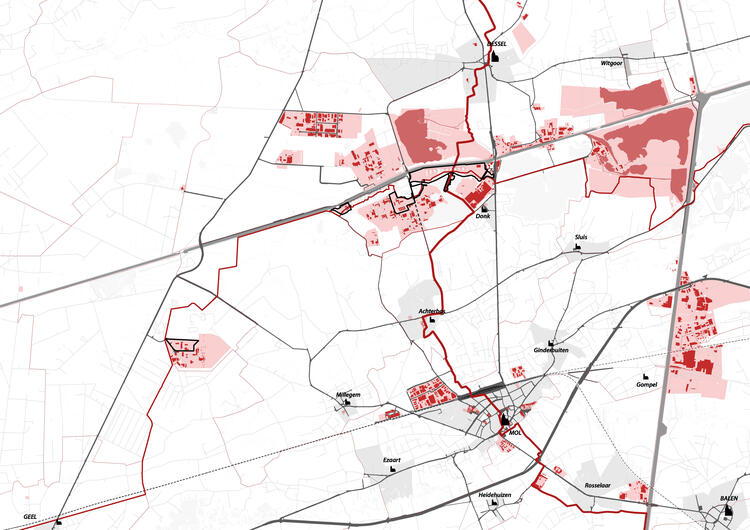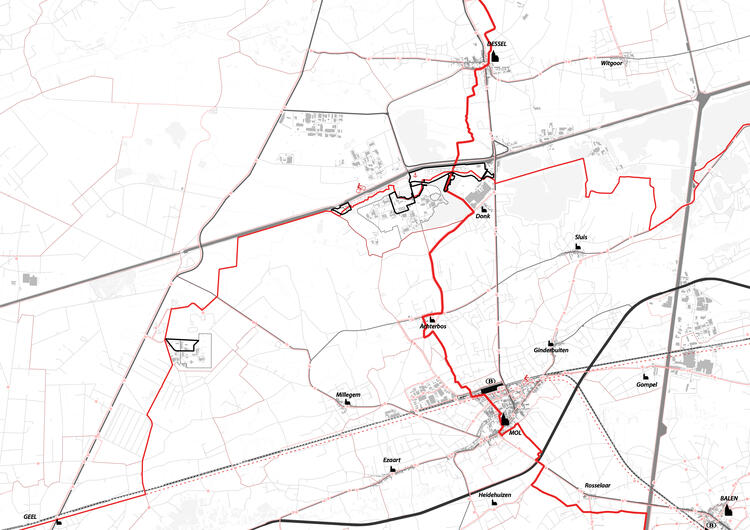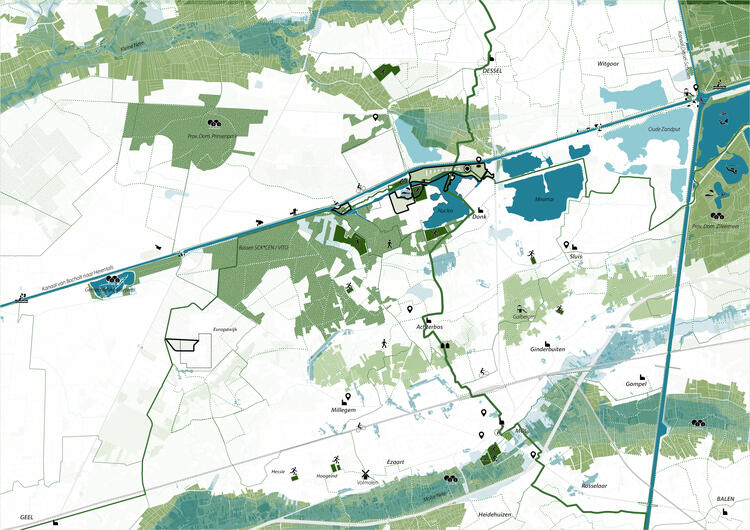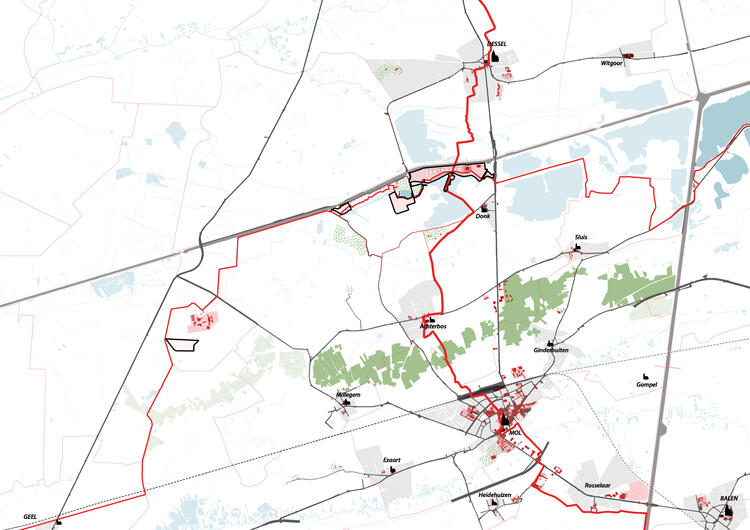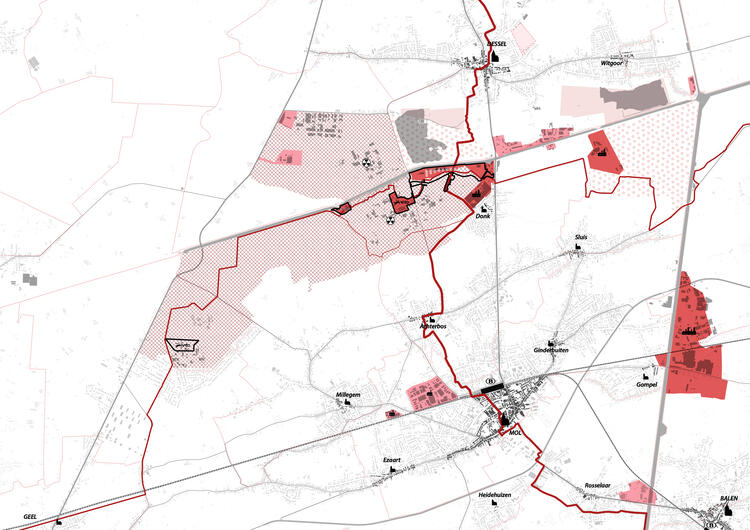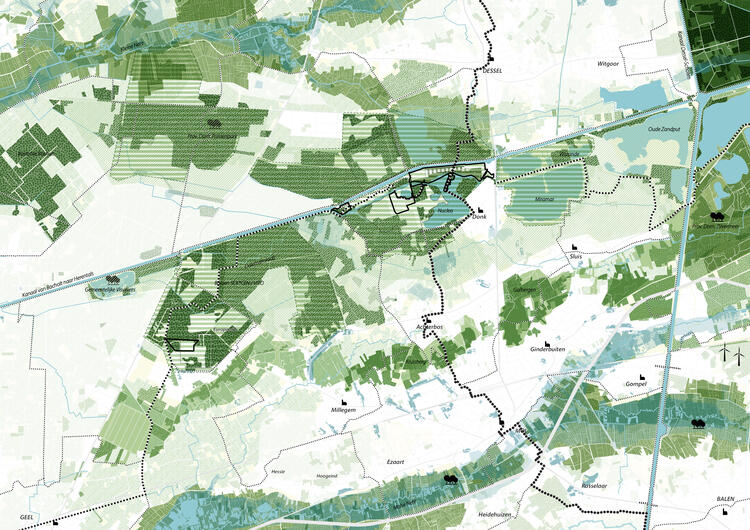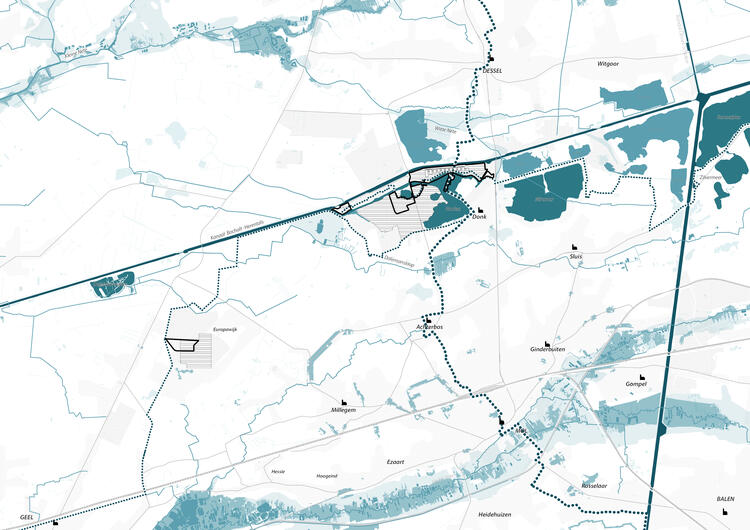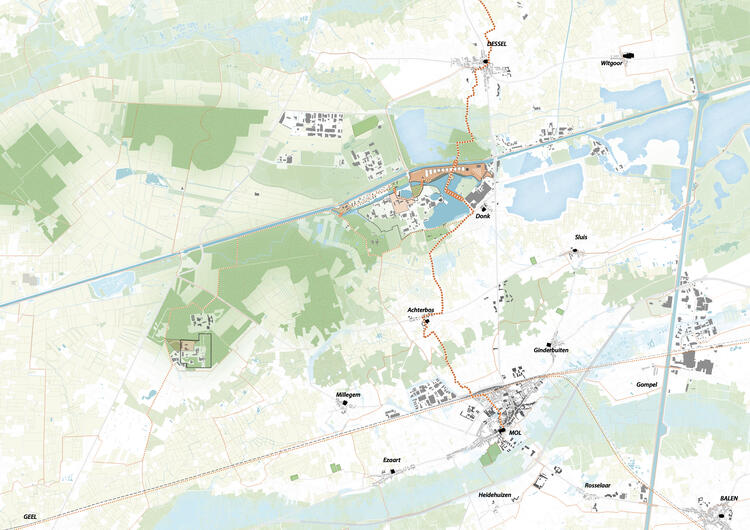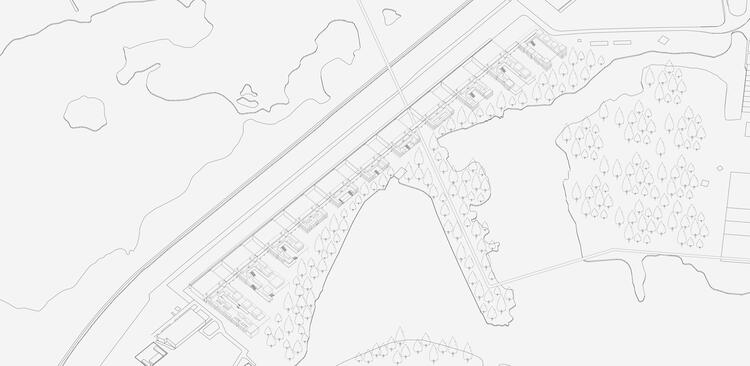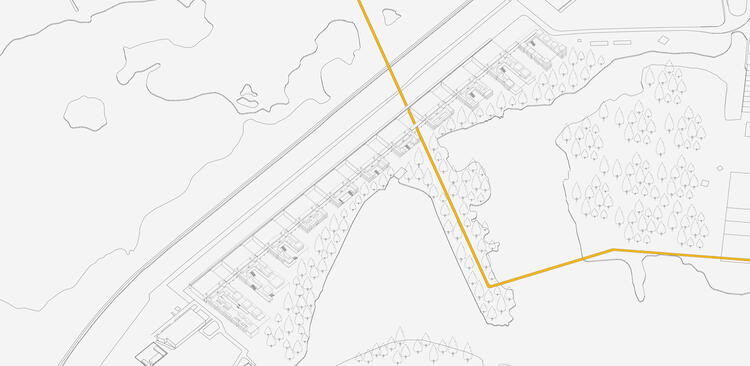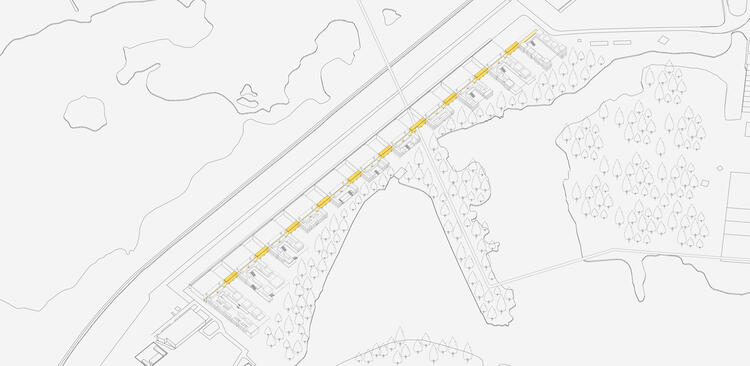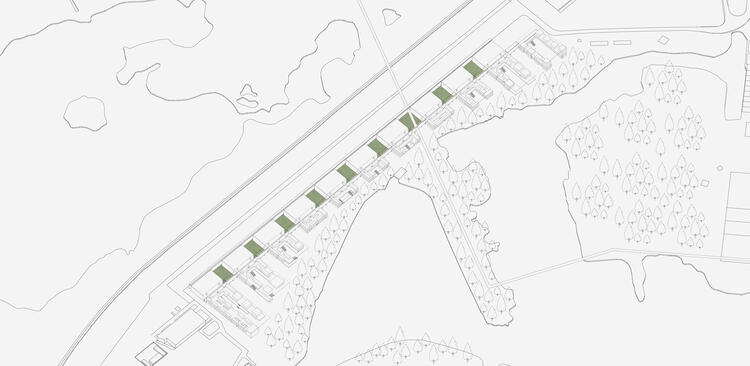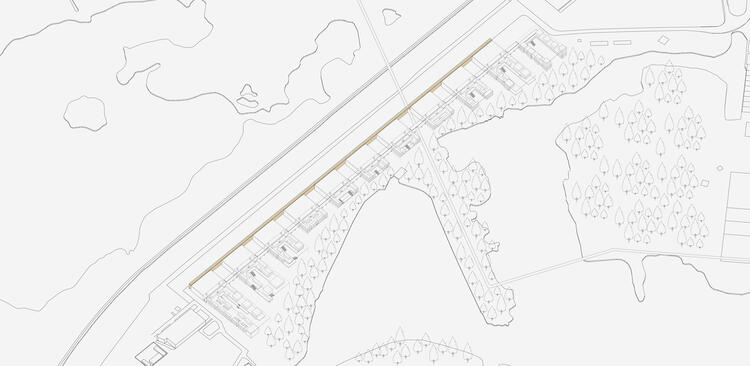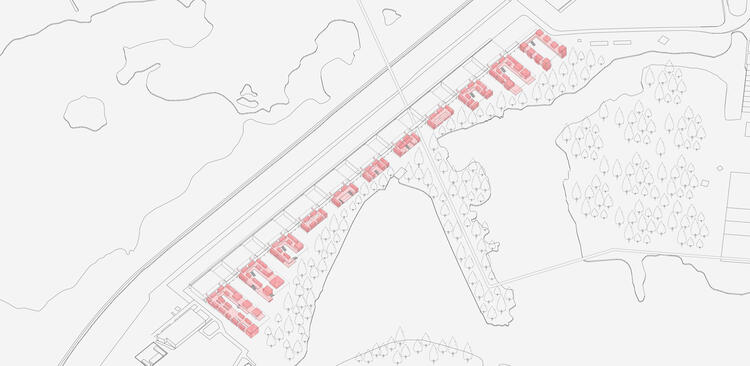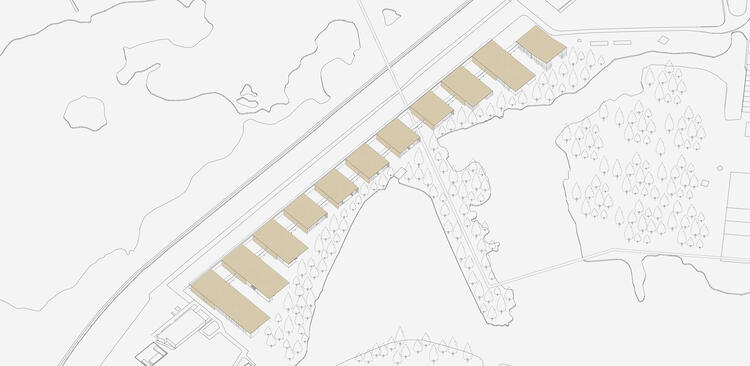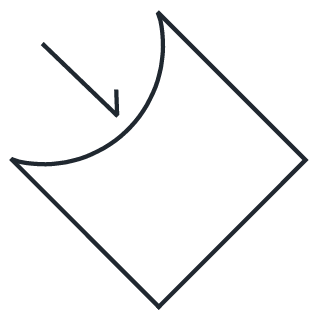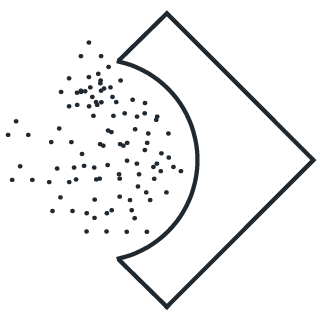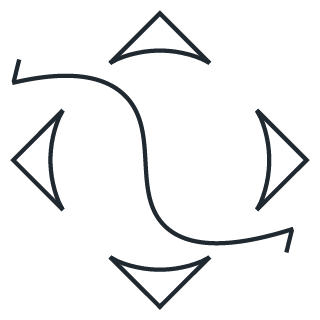From isolated enclave to embedded campus
The Flemish institute for Technological Research (VITO) is akin to the universe’s dark matter, a stealth entity which exerts considerable influence but remains largely invisible in the isolation of its suburban setting. POLO Urbanism devises a strategic framework for a new integrated campus which accommodates the flexibility demanded by rapid developments in science while stimulating internal crossover dialogues and presenting the outside world with a strong, unified identity.
VITO used to be part of the Belgian Nuclear Research Centre (SCK CEN). Its peripheral location and highly secured environment are a legacy from those days. Now operating independently under Flemish rather than federal authority, its low profile has become a hindrance rather than an asset. The institute has been pursuing a more active role in the public debate and its current understated physical presence does not correspond with this renewed ambition.
The VITO campus has a somewhat diffuse arrangement. Every department is nestled on its own plot in the dense forest, organised and equipped according to its own particular requirements. Ad hoc extensions and a relentless overhaul of spatial layouts and technical installations provide an instant fix to wants and needs. This demonstrates that in the fast-changing world of scientific research having a quickly adaptable infrastructure can be of great benefit.
As a substantial new plot of land was unlocked for use in 2017 with the construction of a geothermal power plant, questions arose on how this terrain could be used to rethink the institute’s inward-looking spatial model.
Rather than forcing VITO’s ever-changing programme into a rigid masterplan, POLO Urbanism conceives a framework that will guide future development and can be implemented in phases. This framework should leave room for future flexibility while maintaining legibility. It is to increase cross pollination within the institute and integrate into the surrounding community as well as the typical “Kempen” landscape.
From the sterile ambience of a business park to the vibrancy of a living campus
Current VITO facilities are distributed over four different sites. We believe concentrating activities on one site will open up possibilities. It would encourage collaboration between departments and stimulate accidental encounters. A concentration of functions will also facilitate sharing of spaces and services, creating both economies of scale and a more vibrant work environment.
The availability of a large vacant plot that is strategically located alongside the canal presents us with an opportunity to realise this vision. A new soft mobility route will bridge the canal and bisect this terrain, connecting it to a network of bike highways and recreational routes. This will improve transport links to the nearby train station, encouraging a modal shift for the employees and reintegrating the institute with the nearby communities of Mol and Dessel.
A new compact, consolidated campus and an increased accessibility improve the visibility of the research institute and should lead to a clearer communication of VITO’s identity to the world.
The facilities are to grow gradually and in a linear fashion, organised along a connector which runs parallel to the canal. This connector is an internal street, a generously-sized circulation space incentivising spontaneous meetings and cross-departmental dialogues.
The connector separates the laboratories near the canal from the offices oriented towards the forest. Hence the labs have a direct link to the logistical infrastructure. Here the built volumes are clad in screens which serve as a permanent scaffold in front of the changeable constellation of labs, allowing for a phased implementation behind the unifying canal façade. The offices on the other side of the connector engage the idyllic surroundings of the forest and waterbodies in a more informal interplay of volumes.
The connector as backbone of the phased development thus functions both as a boundary and meeting space. Here VITO’s hands-on experimentation meets its theoretical backbone and supporting services.
Set among the typical heath and forest landscapes of the Kempen in an area of high ecological value, it is evident that this building complex should be intensely porous. In between the buildings a series of green rooms provide a blend of architecture and nature, functioning simultaneously as outdoor meeting spaces and biodiversity corridors.
Collaborative (by) design
As VITO aims to increase cross-departmental collaboration, POLO Urbanism thought it apt to open up the design process to different stakeholders and disciplines, We set up intensive workshops with employees and departmental heads to explore future scenarios together.
These co-creation sessions included a set of activities which tested the key ambitions of our scheme and engaged the future users to find out more about their functional preferences and spatial affinities.
Through the use of simple block models users could express preferences in terms of spatial layouts, accessibility and workspace design. This feedback led us to refocus our research by design to include more spaces for informal work and meeting spaces. We also acquired valuable information on desired locations for functions, occupation levels and desired atmospheres — the latter through the use of reference images.
In the meantime architects have been commissioned to develop the first building for the new campus, following the framework designed by the urbanism team from POLO. We continue to proactively transfer knowledge to this new design team and we are looking forward to seeing our vision taking shape on site.
Boeretang
Mol
Belgium



